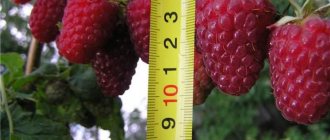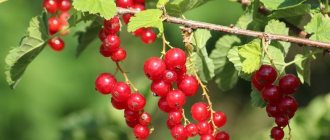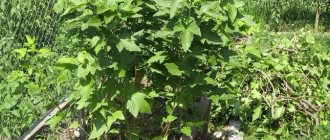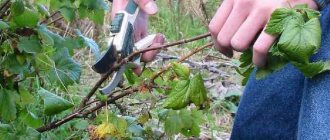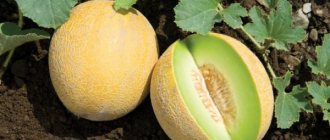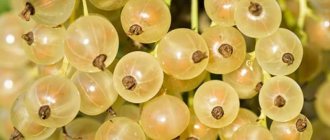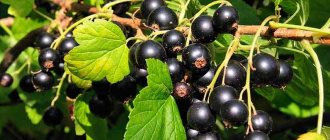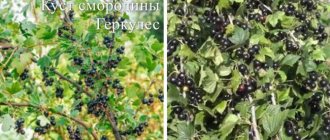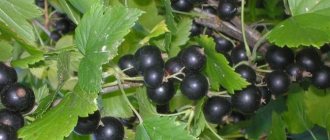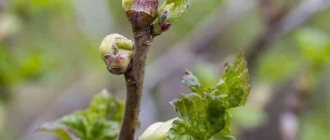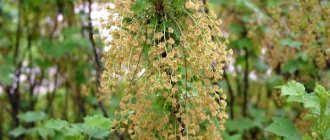1
12269
If you want to grow an unusual fruit shrub on your plot, then you should pay attention to golden currant: photos and descriptions of this crop delight many gardeners. It combines high decorative properties, simple agricultural technology and decent yield. The golden appearance is so extraordinary that it is often considered a hybrid of currants and the well-known gooseberry. What might you think when you see gooseberry foliage on branches without thorns, decorated with clusters of pink or dark berries. This is really a currant, but a completely unusual one.
The plant got its name from the golden color of its flowers.
History of appearance in Russia
The culture comes from North America. It came to Russia in the 19th century. Several varieties based on the American Crandall were created by biologist and breeder I. Michurin. One of them, the Krandal Seedling, became the ancestor of many varieties later bred in the USSR in connection with the search for drought-resistant and undemanding crops for creating protective strips.
Golden currant became widespread in the 30-40s of the 20th century in the steppe arid regions of the country, including the territories of Ukraine, Kazakhstan, Uzbekistan, Altai, and Siberia.
At the end of the 40s, after the end of the war, golden currant selection was carried out in Tashkent, at the Schroeder Institute, where about 20 new high-yielding varieties were created, such as Uzbekistan, Solnyshko, Elixir, Muhabbat, Kishmishnaya, etc.
History of selection
The species became widespread as a productive crop in the 19th century. Initially, the crop was grown as an ornamental plant, as a hedge and as a honey plant.
Later, gardeners appreciated the taste of the berries, and selection continued in the direction of increasing the yield and quality of the fruit.
One of the oldest varieties of golden currant is considered to be Crandal, an American selection, which formed the basis for many domestic varieties. Ivan Michurin is considered a pioneer in the creation of Russian varieties of golden currants. His first creation was the "Krandal Seedling".
What does it look like
Golden currant is a deciduous perennial shrub. Grows up to 2.5 m in height. The bush is multi-stemmed, the shoots are erect, few-branched, with red bark, smooth or slightly pubescent. Bend to the ground under the weight of the crop.
The root system is powerful, going into the ground to a depth of 1.5-2 m. It also grows in the horizontal direction, the bulk is in the surface layer at a depth of about 30 cm.
The leaves are green, glabrous, about 5 cm long and about 6 cm wide. They are alternate, with a wedge-shaped base and three blunt, deep serrated lobes.
Golden currant is a honey plant. Its flowers attract bees with a bright spicy aroma
The racemes consist of 5-15 flowers, reaching a length of 3-7 cm. The bracts are erect, large. The flowers are yellow or yellow-green, about 1.5 cm in diameter, with a tubular hypanthium 1 cm long, formed by the fusion of the receptacle and the floral tube. The sepals are prostrate, the petals are short (half the size of the sepals). The corolla is reddish or greenish.
The berries are often black, sometimes purple-brown, and yellow in some varieties. The fruit size is up to 8 mm in diameter. The shape is oval, spherical-oval or teardrop-shaped. The pulp is sweet and sour, the skin is dense.
Description of golden currant. What color does it come in?
Despite its ease of care, this currant family is less common in gardens than the traditional black or red ones.
Experts believe that the peculiarity of golden currant is that it combines two functions - decorative and fruiting.
The bush is a weakly branched plant, up to 2.5 meters high (depending on the variety). The described shrub is an independent species, not a hybrid.
Many, when they first see golden bushes, mistake it for a hybrid of currants and gooseberries. The leaves and fruits are similar in appearance to gooseberries. Berries, in addition to black, can be yellow, red, orange and brown. The shape is slightly oblong. They taste like blueberries, have a slight sourness, and have no special smell. They handle transportation well over long distances.
The average size of the berries is 1 cm. The plant is an early bearer - the first berries are harvested in July. From one adult bush you can collect up to 8 kg of fruit, but there is one condition - 2-3 more bushes must grow nearby. Otherwise, the harvest will be much smaller.
The plant blooms, like pink currants, in May-June, it all depends on the climatic conditions of the region. Flowering duration is approximately three weeks. During this time, many small (about 1 cm) flowers, yellow or golden-yellow, appear on the bush. They are collected in racemes containing from 5 to 15 flowers.
Be careful with young shoots and golden leaves. Their juice contains poisonous hydrocyanic acid, which is dangerous to humans.
Advantages and disadvantages
| pros | Minuses |
| Unpretentiousness, disease resistance | Ovaries may crumble due to lack of nutrition and moisture |
| High yield | Overripe fruits crack |
| Frost resistance - withstands frosts down to -40 degrees. | Young shoots may freeze slightly because they do not finish growing until the cold weather |
| Easily tolerates temperature changes | Wet berry picking |
| Resistance to drought and heat - leaves do not dry out at 40 degrees | The leaves should not be brewed as they contain a poisonous substance. |
| Undemanding to soil, grows in any area, including steep slopes | |
| Flowering later, no risk of return frosts |
Description
Golden currant is a medium-sized shrub, no more than 2-2.5 m high. In terms of growth and fruiting characteristics, it is more similar to red currant. With proper care and favorable growth conditions, the crop bears fruit in one place for up to 20 years.
The plant consists of one central stem and multiple lateral shoots of different ages. Each of them bears fruit, with varying degrees of intensity. The branches are brownish in color, with slight fluff.
Currant bushes grow rapidly due to their powerful root system. The central root lies at a depth of two meters, and fibrous branches are based closer to the surface.
The leaves are small, leathery, carved. During the warm season they are rich green in color, but by autumn they turn orange-yellow. It blooms with fragrant and beautiful flowers in May for a week. The inflorescences are large, golden-cream in color, and exude a pleasant fragrance.
Varietal characteristics
The culture is drought and frost resistant. The flowers almost never freeze, although they bloom quite early. Even if this happens, the currant quickly recovers and this does not affect the future harvest.
The fruits look like gooseberries, only smaller. Ripening occurs in July. The berries stay on the bush for a long time, without shedding.
Despite the name, the color of currant fruits can be different: orange, red, yellow, black-brown. It depends on the variety. The average yield per planting is 8-15 kg.
The culture is undemanding to care and soil, and is highly resistant to diseases and insect pests.
Characteristics and useful properties
Golden currant is resistant to adverse weather conditions, diseases and pest attacks, tolerates lack of moisture well, and is undemanding to the soil. It is often planted as a soil protective plant. The bushes can grow to a respectable size.
The leaves are similar to gooseberries, without a currant smell, and grow after flowering. They contain hydrocyanic acid compounds and are poisonous.
Golden currant blooms in late May-early June. Flowering lasts up to three weeks. There is no threat of frost at this time, so flowers are pollinated well, which ensures high yields.
The berries appear in July. They contain carotene, vitamins B and C, but the content of nutrients is less than in black and red currants.
Among the beneficial properties, a small amount of acid can be noted, so they can be eaten by people with stomach ulcers.
Golden currant berries have a pleasant taste and are suitable for making wines, compotes, juice
Let's get acquainted
Golden currant will become a real decoration of the garden - during the flowering period, no one can compare with it in beauty!
This is the only currant that did not get its name from the color of the berries. It is precisely because of its dazzling yellow flowers that abundantly dot the bush that the species received its name.
Currant flowers have a bright, rich aroma that can be felt from afar.
- The middle of summer comes, and the delicate beauty finally bears fruit. And she is still beautiful. Its oval or round berries are very shiny and seem to glow in the sun. Multi-colored fruits can reach a weight of up to 3 grams.
The taste of golden currant berries may seem unusual to lovers of black currants.
They are denser and stronger (which, by the way, is very good for transportation). From the fruits of this beauty you can make delicious jams, preserves, jellies, desserts, fruit drinks and compotes.
Cool autumn will soon arrive. Powerful currant bush (golden currant can grow up to 2.5-3
m) is transformed again.
This time the bush changes the color of the leaves (some become purple, and on many leaves various variegated spots appear - yellow or red).
♦ Are there any disadvantages to golden currants? Golden currant bushes do not really favor wet weather - at such a time the beautiful fruits can crack, and the crop itself prolongs the ripening period of the berries.
This not very pleasant nuance is more than covered by the numerous advantages of the beauty: golden currants perfectly withstand any adversity: dust, smog, drought, heat, cold, smoke, disease and pest attacks.
- Even in particularly cold winters (when frosts drop below 30° C), although the currant freezes a little, it recovers completely and quickly.
What are the benefits of sunberry?
Golden currant is not as rich in vitamin C as its black-eyed sister. But golden currant berries store a lot of carotene (vitamin A).
The golden berry is ahead in quantity even of sweet peppers and apricots.
In addition to vitamins, the golden beauty contains a number of very useful substances for humans: pectin and tannins. The berry contains many acids important for the body, especially succinic, malic and citric.
What the fragrant beauty is especially rich in is its high content of coumarins.
These organic natural compounds help reduce the level of blood clotting (this ability is important for protection against the occurrence of heart attacks).
The berry is very useful for people with diabetes, because the fruit also contains insulin-like substances.
- The berries retain all their usefulness in any processed products.
Fruit drinks, juices and compotes made from golden currants are effective as refreshing and antipyretic agents.
Healthy drinks are able to remove harmful salts, waste, and toxins from the body, they improve appetite and perfectly increase performance.
And increased iron content is useful in the treatment of anemia (anemia). The berries also provide benefits for sclerosis and hypertension.
Attention! It is important! Young leaves and buds of golden currant are poisonous! They have hydrocyanic acid. It is strictly forbidden to make tea or any tinctures from them! This golden treasure has only its berries for food!
Varieties
A large number of them have been released. The most popular varieties of golden currants are presented below.
Muscat
Refers to mid-season. The bushes are tall and at the same time compact, the flowers are large and yellow. The fruits are large, round, black, sweet, with a chalk taste and aroma of nutmeg. Productivity – 4-7 kg per bush.
Muscat and Isabella
Isabel
It is distinguished by tall, slightly spreading bushes. The fruits are sweet and sour, black-brown in color, weighing 2 g. The variety is resistant to diseases and pest attacks. Productivity – 4-6 kg per bush.
Ermak
Mid-season variety. The bushes are vigorous and dense. The flowers are fragrant, bright yellow. The fruits are sweet and sour, their weight is 1.5 g. Productivity is up to 8 kg.
Shafak
It belongs to the mid-late variety and tolerates heat, drought and frost well. Resistant to diseases and pest attacks. The bushes are medium in height, the tops of the stems droop. The length of the brushes is about 4 cm. There are an abundance of berries on the brushes. The fruits are large, dark burgundy with a gray tint, sweet and sour. Productivity – 5-8 kg per bush.
Variety Shafak
Venus
The variety is resistant to drought and heat, as well as frosts down to -40 degrees. The shoots are slightly pubescent, smooth, and rather short. The berries are round, thin-skinned, black, sweet and sour, juicy. Productivity – up to 8 kg.
Amber
It is distinguished by bright orange berries with a refreshing taste and weighing up to 1.3 g. Productivity - 7-8 kg.
Variety Yantarnaya
Michurinskaya
Refers to mid-season. A variety with vigorous bushes and straight shoots. The weight of the fruit reaches 1.5-2.5 g. The berries are round, dark burgundy in color, fragrant, sweet and sour.
Kishmishnaya
Refers to early varieties. The bush grows up to 1.8 m, spreading. The berries are small, heart-shaped, black, weighing up to 4 g. They have a dessert taste with a slight sourness. Productivity – up to 10 kg per bush. There are several types of currants of this variety - with black fruits, with raspberry ones, etc.
Silver
Grows up to 2.4 m in height. The bush has few branches. The berries ripen in July and reach a weight of 1-1.5 g. The yield per bush is 5-6 kg.
Growing: seedling selection and propagation
Planting bushes sold planted in pots must be done in the fall or spring according to the instructions above. Typically, seedlings in pots have a well-protected root system.
If seedlings are not sold in pots, then give preference to two to three year old ones. They have a developed root system and good shoots.
You can also start propagating golden currant bushes yourself.
There are several ways:
- Seminal. Seeds sown in autumn give a good germination rate - about 80%. Before sowing in spring, seeds need to be stratified for 4 months. This should be done in wet sand at a temperature of +2 - +5 degrees Celsius.
- By cuttings. This is not the best way to propagate golden currants; the survival rate is only 30%. Large cuttings must be cut from the bottom of the bush, then they must be planted in soil made of sand and peat. It should be placed in a greenhouse; rooting requires a temperature of +28 - +30 degrees.
- By layering. Near the bush you need to loosen the soil and make a shallow ditch. A young shoot is selected from the bottom of the bush and placed in a groove. Next, the shoot must be pinned to the ground with wire and covered with soil. Only the top should remain above the surface. It is necessary to water well and mulch with peat so that the soil does not dry out. Over the summer, the shoot will take root and give roots; in the fall it can be cut off and transplanted to another place.
Rules for planting and care
Golden currants are very easy to plant and grow.
How to choose seedlings?
The choice of variety depends on the region. For the middle zone, varieties that can withstand frosts down to -40 degrees are suitable.
When choosing planting material, you must adhere to the following rules:
- The seedling must be 2-3 years old.
- The presence of 3-5 main roots 20 cm long and developed fibrous roots. They should not be rotten, dried out, or have signs of damage by pests and diseases.
- The presence of two shoots 35 cm long. There should be no broken branches or damage.
On a note. If the seedling has been left in the sun for a long time, it may not take root.
After purchasing seedlings, their roots need to be wrapped with a rag soaked in water. If the roots were damaged during transportation, they should be trimmed.
Choosing a place and landing
Golden currant is not demanding on growing conditions. You can plant both on level ground and on slopes. It is best to grow it in the sun, but shaded areas are also suitable. The soil can be anything.
Planting time is spring or autumn. In spring, seedlings are planted during the period of bud swelling
In the Moscow region, it is better to plant in the fall, from the second ten days of September to the beginning of October.
Planting process:
Yoshta berry (photo)
- It is recommended to prepare the soil two months in advance. Dig the soil to a bayonet depth, adding organic matter at the rate of: per 1 sq. meter - 2.5 buckets.
- Dig a hole. Its depth should be 12 cm greater than the straightened roots, the diameter should correspond to their size.
- Place the bush in the hole, cover it with soil, tamp it down and water it generously - you will need about three buckets per seedling. When the moisture is absorbed, loosen the soil, but it is better to put mulch (humus).
- Trim the stems, leaving 3-5 buds on them.
Watering
After planting, water the bushes every week. Adult specimens do not need to be watered, only in dry weather and when the berries are forming. Over the entire season, no more than 3-5 waterings will be required.
One young bush will require 1-2 buckets of water, for mature currants – 3 buckets.
Pour water into the furrows under the bush; water should not fall on the leaves when watering.
For large plantings, it is advisable to organize automatic watering with adjustable water pressure using sprinkler equipment.
Top dressing
Without feeding, golden currants will grow well and bear fruit for many years. Proper application of fertilizers will improve the condition of the bushes and help increase productivity. In the first two years of life, feeding is not required.
From the third year, fertilizers are applied according to the following scheme:
- To stimulate growth, nitrogen-containing compounds are needed. It is recommended to apply in spring. Urea can be used. One plant will require 30 g.
- Autumn feeding should include organic matter, superphosphates and potassium fertilizers. Organic will require 6-7 kg, superphosphate - 100 g, potassium salts - 2 teaspoons.
- After harvesting, complex formulations with a small amount of nitrogen will be required.
Trimming
If you do not prune the bush, it will grow greatly and grow above 2 m. Golden currants require anti-aging pruning. Dried branches and branches need to be trimmed regularly. After winter, it is necessary to cut off the frozen tops.
Every year, before the buds swell, it is recommended to remove shoots older than 5 years and excess annuals, leaving the strongest ones. You can carry out such pruning in the autumn, but this should be done after the leaves fall.
You need to start forming a bush from the second year after planting. Weak shoots are cut at the root. The tops of strong branches are cut off, leaving 3-5 buds. It is also necessary to constantly remove weak root shoots.
In the third year, at the end of spring and beginning of summer, it is recommended to pinch the tops of the root shoots; in this case, branches will grow from them, which will yield a harvest in a year.
On a note. If a bush stops producing basal shoots, this indicates its aging.
Watering and fertilizing
Caring for golden currants includes moderate watering, sanitary and formative pruning. In many ways, agricultural technology is simpler than when growing the more popular black and red currants. The plant does not require watering. For a comfortable existence, rare moisture during periods of drought is sufficient. The rest of the time the plant will have enough natural precipitation. 2-4 buckets of water are added to the tree trunk circle. Periodically, the soil around the bush is loosened and cleared of weeds.
Prepared watering solution
In spring and during flowering, fruit-bearing perennials absorb more nitrogen, so nitrogen or complex fertilizers are used for feeding. Urea and nitroammophoska are suitable. 25-30 g of fertilizer is applied to the tree trunk circle. After harvesting, you need to add 25 g of potassium nitrate and 35 g of superphosphate. In the fall, you can cover the tree trunk circle with rotted manure (once every 2-3 years).
Golden currant bushes can overwinter without shelter. It is enough to mulch the soil with peat and dry mullein. Shoots frozen in severe winter quickly recover after sanitary pruning.
Reproduction methods
Golden currants can be propagated in a summer cottage using cuttings, layering, and root shoots.
Propagation by seeds is a long and labor-intensive process; in addition, the young plant will not inherit varietal properties from the mother bush. Therefore, it is not advisable for amateur gardeners to resort to it when there are reliable, quick and simple methods.
Cuttings
Cuttings are considered the most reliable way to propagate currants and are most often practiced in amateur gardening.
Can be propagated using both woody and green cuttings
It is more convenient to obtain planting material from lignified cuttings. They are cut about 30 cm long from last year's shoots of an adult bush in late August-early September.
You can plant them immediately after cutting, that is, in the fall.
If spring planting is planned, you need to do the following:
- Melt the paraffin, dip the cuttings, wrap them in a damp piece of cloth or paper, put them in a plastic bag, tie them, and place them under the snow for the winter.
- In the spring, take out the cuttings, cut off the ends in paraffin at an angle of 45 degrees, plant them at an angle in the ground or greenhouse, so that there is a distance of 15–20 cm between them. The cuttings must be buried in such a way that there are two buds on the surface.
- Then water well and cover the ground with mulch. After planting in open ground, leave the cuttings under the film until several leaves appear.
Plantings need to be ventilated from time to time, watered regularly, loosened the soil and fed with a solution of cow manure. By autumn they will grow to 40–50 cm, and they can be planted in a permanent place.
The process with green cuttings is as follows:
- Cut cuttings 10 cm long with two leaves from the middle of the shoots.
- Place them in water for two weeks until they develop roots 1 cm long.
- Then plant in bags with drainage holes filled with moist soil.
- For ten days, water every other day, and the soil should be as thick as sour cream. Then stop watering.
- When the cuttings grow to 50 cm, plant them in open ground.
Growing shrubs
In regions of mid-latitude and southern regions, planting in open ground is carried out without restrictions. In colder areas, the range boundaries do not cross the boundaries of areas where winter temperatures drop below minus 40.
Read about the use of ammonia against aphids at the link.
There are no special requirements for soil. On clay soils where moisture retention occurs, it is not worth planting golden. Their yield will be much lower than planned. But if there is no other land, then you can start preparing it, which consists of ensuring good drainage to the soil.
How to plant a plant correctly. When does it begin to bloom and bear fruit?
For those who deal with black or red currants, this procedure will not be difficult. For beginners, it is important to consider the following.
Before planting, you need to prepare holes for planting. They should have the following dimensions - 50x60 cm. We fill the holes one third with either ready-made compost or rotted manure. To this substance you need to add 200 grams of superphosphate or ash and mix everything.
The distance between adjacent holes should not be less than three meters, especially in relation to tall varieties.
During planting, the root collar needs to be buried 5-7 cm into the soil. This will accelerate the formation of adventitious roots and the growth of young shoots.
Scheme for planting golden currant bushes.
The soil around the sprout needs to be mulched. The sprout itself is cut to four buds.
Selection of seedlings
First of all, you need to decide why you need a seedling. For decorative purposes, you can choose almost any variety, even one not zoned in your region. But if you want to get a big harvest, then there are some nuances of choice:
- Experts advise choosing a seedling in nurseries.
- The next piece of advice is to choose a zoned variety adapted specifically to your climate zone. After all, varieties intended for southern regions will not yield crops in latitudes with a more severe climate and vice versa.
- Appearance. When purchasing a seedling, you should have an idea of what the bush will be like as an adult. This is useful when a plant is purchased for decorative purposes.
- Productivity. Of course, each variety has its own yield indicator, but the quality of care should not be ignored. But there is a small drawback - it is hardly possible to exceed the yield limits of the variety. For example, if it is said that the yield is no more than 6-8 kg per bush, then you will not be able to get more, no matter what you do. Therefore, check this indicator at the purchase stage so as not to be disappointed.
- Care. All golden varieties are extremely unpretentious. Therefore, experts advise choosing the largest-fruited and most productive varieties available in your region.
Nurseries usually sell seedlings in pots. If they are not available, then choose two or three year old ones with well-developed roots.
Time and place of landing
Seedlings are usually planted in the fall. Although many gardeners do this in the spring. The main thing to remember is that the landing should be done:
- In autumn - plant after the end of sap flow.
- In spring - on the contrary, before it begins. In addition, in the spring you need to make sure that frost does not return. Otherwise, the seedling may die.
As for the planting site, you can choose any one, the main thing is to avoid clay soils with high humidity. The best option is a well-lit or slightly shaded area with fertile soil.
The following fact speaks in favor of a sunny place - fruit ripening occurs faster, and the yield is slightly higher.
Control measures and folk remedies for aphids are described here.
Pest and disease control
This crop is highly resistant to diseases and attacks of harmful insects.
The main pest that can attack golden currants is aphids. It usually appears on young shoots. It can be identified by twisted leaves and twisted branches. The pest slows down the growth of the bush and impairs the quality of the fruit. To combat aphids, spraying is necessary, which must be carried out before flowering and after harvesting. Folk remedies include decoctions of garlic, onion peels, tobacco, or use ready-made remedies, for example, Malathion solution, which you need to take one and a half liters per bush.
Currants are affected by some diseases characteristic of berry bushes in conditions of high humidity, and this only applies to some varieties.
Gray rot, anthracnose, and septoria may develop on golden currants
To avoid these troubles, it is recommended to remember preventive measures. It is important to avoid thickening of plantings and to prune regularly. It is also necessary to destroy fallen leaves, which may contain pathogens and pests.
For prevention, spring treatment of bushes with a urea solution will help. Place 600 g of product in a bucket of water.
Harvest and storage
In most modern varieties, the berries ripen smoothly and adhere well to the shoots, so not only manual picking is used, but also mechanized picking. For further storage, collection with brushes is preferable.
Dry and clean berries can be stored in the refrigerator or cellar for up to 10 days.
Golden currants are actively processed, making jam and compotes from them. The fruits can be frozen and dried.
FAQ
Why don't golden currants bear fruit? There may be several reasons. The main ones are: excess nitrogen due to improper application of fertilizer, planting in the shade where there is no sunlight, the bush is old (over 10 years old), there is no pollinator nearby.
How to use in landscape design? The shrub is decorative and unpretentious, therefore ideal for forming hedges. The plant is also suitable for growing trunks. Golden currant does not lose its decorative effect throughout the growing season. She is beautiful not only during flowering, but also after. The shrub looks especially impressive in the fall, when it is decorated with leaves of different colors - green, yellow, red.
When will fruiting begin after planting? You can expect berries next year.
Tricks of agricultural technology
It is best to plant golden currants in autumn or very early spring (but with the condition that sudden frosts do not occur).
The growing season for the crop lasts from April to September.
- Ideally, golden currant varieties should be planted before sap flow or after it ends.
Golden currant seedlings, which are sold from nurseries in pots (they have a closed root system), can be planted at any convenient time (spring-autumn).
Buy young plants with developed shoots (there should be at least 3-4 of them) and a strong root system.
♦ Where to plant. Choose a place for the beauty with good lighting (but a little partial shade will not harm her). The shrub can take root well on slopes or on the plain.
Growing currants is completely uncomplicated - after all, the golden treasure does not impose any special conditions on the soil. It grows quietly on poor, meager lands.
♦ Planting. Before planting, prepare holes 50 x 60 cm. They must be filled with rotted manure or compost, and a glass of superphosphate or ash should be mixed into them.
Young (2-3 year old) seedlings are planted according to a 2.4 x 1 m pattern. In this case, the root collar of the bush should be deepened by 6-7 cm.
This will speed up the appearance of adventitious roots and stimulate the growth of shoots.
♦ We take care. Caring for golden currants is completely simple. Every year, dig up the soil between the rows, apply fertilizers on time (we fertilize them, like other types of currants), trim the branches and, if necessary, water.
- The branches that are pruned are those that help thicken the bush and prevent the sun from penetrating into the middle of the plant. Also remove diseased and dried shoots that are more than 3 years old. Golden currant varieties produce fewer berries on older branches.
If a young currant has grown too much, it needs to be thinned out (cut out all unnecessary young growth).
The crop should be pruned either in the spring (before the buds swell) or in the fall (after the end of leaf fall).
There is often no need to water the crop (in some cases, rain will be enough). After all, golden currants are drought-resistant.
Water it only if the period is too dry, also during the ripening of the berries.
This is such a wonderful berry - golden currant! Let me also remind you why it is so good and why you should definitely have it in your garden:
- Incredibly impressive and beautiful, capable of decorating a personal plot.
- Practically does not get sick and is not damaged by pests.
- Grows on any soil, except heavily clayey and damp.
- It has very fragrant flowers and is an excellent honey plant.
- Frost-resistant, drought-resistant, unpretentious.
- Can be used as a hedge.
- Very high-yielding, and from summer until frost, when other berries no longer bear fruit.
- The berries are strong and sweeter than other currants.
See you soon, dear readers!
How to grow golden bush
It is not difficult to breed the golden variety in the country. Although for good fruiting in the garden it is worth planting 2-3 seedlings. The more there are, the better the pollination.
Suitable climate
All varieties of golden currant are acceptable for the Moscow region. This species can adapt to extreme climatic conditions. The climate of central and southern Russia is suitable for growing and harvesting. The shrub freezes slightly and dies at temperatures of -40 °C. Varietal currants can withstand southern heat and drought.
Optimal timing
In autumn, golden currant seedlings are planted in the garden from September to October. At least 1-1.5 months must pass before frost. In the spring they are planted after the ground has thawed.
Site selection and landing scheme
Golden currant is remarkable because it grows and bears fruit in any soil. It can be planted near a fence or building. Areas with light shade are more suitable for planting, but the shrub can also tolerate bright sun and shade.
See also
How to properly care for currants in the fall, watering and fertilizing, pruning and preparing for winterRead
Planting scheme, requirements for the landing pit:
- width - 0.5 m;
- depth - 0.5 m;
- the soil mixture for backfilling consists of humus (1 part), garden soil (1 part), ash (1 tbsp.), superphosphate (200 g);
- the distance between planting holes is 2.5-3 m.
Trimming and digging between rows
It is not difficult to form a golden currant bush, because it quickly recovers after pruning due to underground stems and dormant root buds.
The first pruning should be done immediately during planting. To do this, several strong shoots are left on the bush. They are shortened to 4 buds, and the remaining weak shoots are completely cut out. Subsequently, the procedure is repeated, periodically replacing old branches with new ones. On average, one mature shrub should have 20-30 branches of different ages (Figure 7).
Figure 7. Pruning allows you to form a crown of the correct shape
In the process of shortening young plants, you can prepare planting material for cuttings, since propagation by cuttings is considered the simplest and most effective way to grow a young plant in the country.
Golden currants can also be given a certain shape if the crop is propagated for decorative purposes. It is also often used to create hedges.
Application
The shrub has a dual purpose. It is grown as a fruit and berry crop and for decorating streets, parks, and public gardens.
As a fruit and berry crop
The harvest of golden currants is used for winter preparations. They make preserves, marmalade, compote, and freeze them. They make excellent homemade wine.
Use in landscape design
The high decorative value of the shrub makes it possible to use golden currants in the design of streets, squares, and parks. Their bushes are decorated from spring to autumn. Arched long branches reach 2 m in height. In the spring they are covered with clusters of golden flowers for three whole weeks.
In summer, the branches are sprinkled with a scattering of shiny black berries. In autumn, the leaves turn purple. Gardeners form picturesque hedges from golden currants. A green fence decorates the landscape and protects from noise, dust, and wind.
